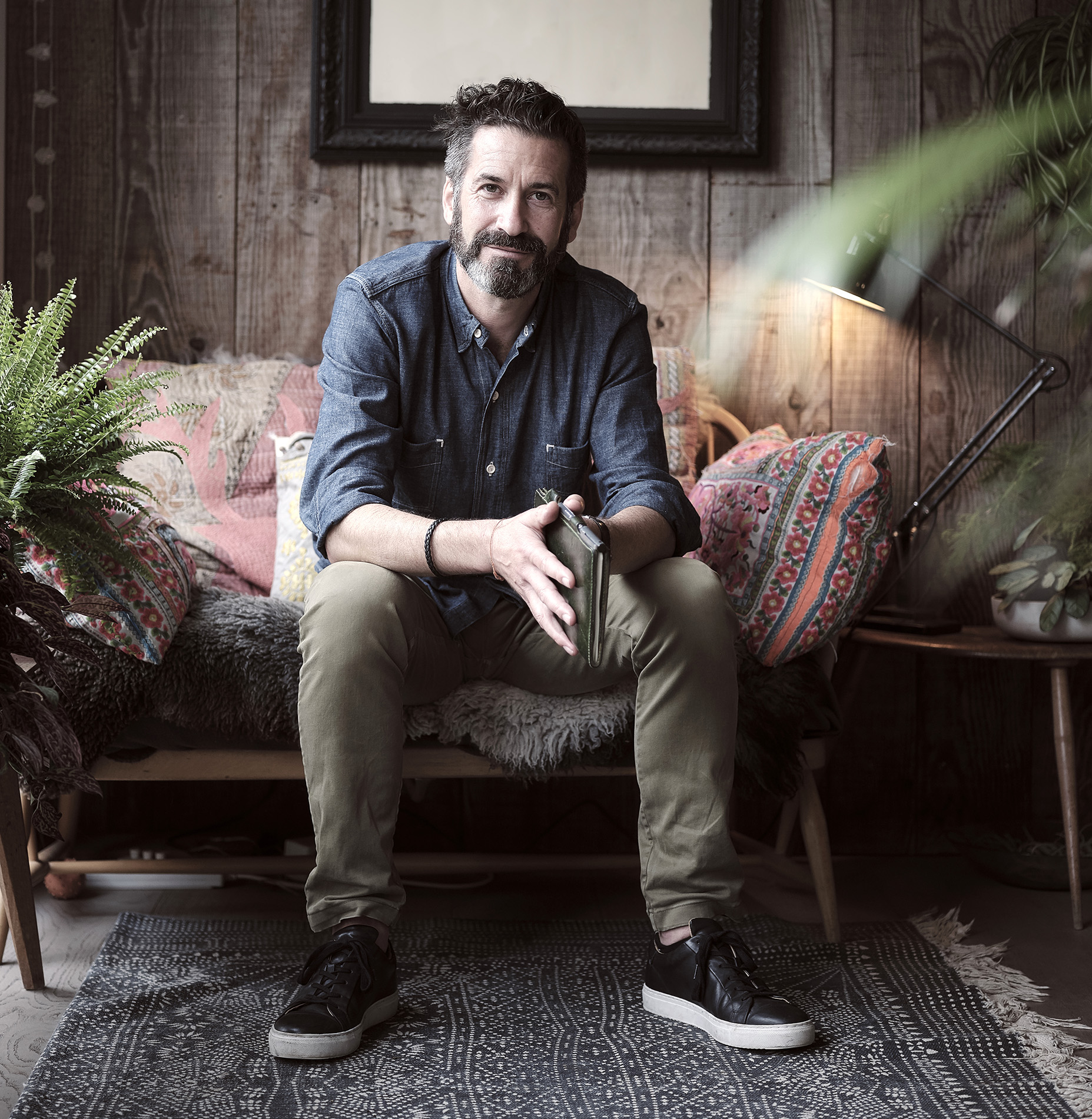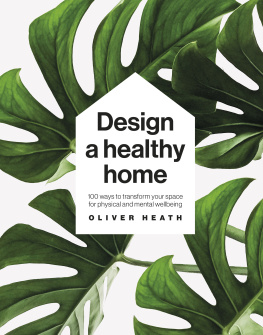Oliver Heath - Design a Healthy Home
Here you can read online Oliver Heath - Design a Healthy Home full text of the book (entire story) in english for free. Download pdf and epub, get meaning, cover and reviews about this ebook. year: 2021, publisher: Dorling Kindersley Ltd, genre: Home and family. Description of the work, (preface) as well as reviews are available. Best literature library LitArk.com created for fans of good reading and offers a wide selection of genres:
Romance novel
Science fiction
Adventure
Detective
Science
History
Home and family
Prose
Art
Politics
Computer
Non-fiction
Religion
Business
Children
Humor
Choose a favorite category and find really read worthwhile books. Enjoy immersion in the world of imagination, feel the emotions of the characters or learn something new for yourself, make an fascinating discovery.
- Book:Design a Healthy Home
- Author:
- Publisher:Dorling Kindersley Ltd
- Genre:
- Year:2021
- Rating:4 / 5
- Favourites:Add to favourites
- Your mark:
- 80
- 1
- 2
- 3
- 4
- 5
Design a Healthy Home: summary, description and annotation
We offer to read an annotation, description, summary or preface (depends on what the author of the book "Design a Healthy Home" wrote himself). If you haven't found the necessary information about the book — write in the comments, we will try to find it.
Design a Healthy Home — read online for free the complete book (whole text) full work
Below is the text of the book, divided by pages. System saving the place of the last page read, allows you to conveniently read the book "Design a Healthy Home" online for free, without having to search again every time where you left off. Put a bookmark, and you can go to the page where you finished reading at any time.
Font size:
Interval:
Bookmark:


Preferred application settings
For the best reading experience, the following application settings are recommended:
- Orientation: Portrait
- Color theme: White background
- Scrolling view: [OFF]
- Text alignment: Auto-justification [OFF](if the eBook reader has this feature)
- Auto-hyphenation: [OFF](if the eBook reader has this feature)
- Font style: Publisher default setting [ON](if the eBook reader has this feature)
g
Welcome to your starting point for creating a happier, healthier home! Like me, youve probably recognized that your home is the most important place in your life a place that you can shape and change, and which has a real impact on how you feel about, and interact with, the world around you.
When it comes to interior design, all too often we use it as a way of expressing our identity, to show our style, status, power or wealth. These are all extrinsic, or external, considerations. What if we were to turn this around and instead take an intrinsic approach, drawing on what matters most to us, making every design choice an opportunity to improve our physical and mental wellbeing? What would it look, feel, smell or sound like? Could your home make you feel better?
Over the last eight years, I have been working with an inspirational team at Oliver Heath Design, with backgrounds in architecture, interiors, sustainable design and psychology, to uncover how the spaces we inhabit can have a deep impact on our mental, physical and emotional states. During this time, we have become thought leaders in biophilic design (more on that in a moment), writing white papers and designing strategies and spaces for world-leading organizations that have improved peoples working lives through the spaces they live and work in.
Our research started in commercial design (offices, retail and educational spaces), where we had to demonstrate the value of a human-centred approach. We found that putting wellbeing first can help businesses improve their outcomes through the increased focus, productivity, and engagement of people in their buildings, as well as by reducing costs from high staff turnover and absenteeism.
It has taken longer to demonstrate the value of a human-centred approach in our homes where a business case isnt relevant so in the domestic sphere the movement has been slower to take off. However, with the 2020 pandemic and global lockdowns, many of us worked from home and became acutely aware of how much impact our own four walls can have on us. So we decided to take all the good stuff weve learned over the years and translate it into the home, to help people create happier, healthier places to live in.
We hope that, by exploring some of the 100 ways to create a healthier home in this book, your home can relax and restore you, help you recuperate, connect you with others and improve the quality of your life in many other ways. In each chapter we investigate key issues to tackle to improve wellbeing in your home, both practical issues such as air quality, water and temperature, and softer design issues like colour, texture, light and connection with nature. We have distilled complex issues into bite-sized pieces to introduce the things we feel you should be aware of. Each one is a good place to begin, and we encourage you to go out and investigate further.
We have tried to ensure our solutions are relevant across a range of types of home ownership and budget. Whether youre renting, buying your first home or creating a better home for you and your family, youll find ways to improve your space and the quality of your life in it.

g
Our approach to mental and physical wellbeing is based on biophilic design principles. This design ethos builds on the concept of biophilia, the innate human attraction to nature and all that is alive.
Humans universal appreciation of nature can be traced back to long before we became urban dwellers, and makes sense when you consider that we evolved in natural settings. After all, it was out in nature that we learned how to survive and thrive; where understanding our environment and natures cycles enabled us to flourish.
Our ancestors navigated their way through life by observing things such as sunrise, sunset, the seasons, animals, plants and weather patterns. Their senses were finely attuned to understanding these environments and it would have been crucial to recognize landscapes that could support life, to be able to differentiate between safety and danger, make quick decisions and keep fight or flight responses in full working order.
The biophilia hypothesis proposed by the biologist E O Wilson suggests that we have inherited all of this from our ancestors, and our physiology is still very much adapted to seeking a connection with nature today. We might live in noisy, crowded, busy, geometric urban spaces, but we still benefit from interacting with nature and need to remember that we are very much a part of it.
Another scientific idea, the savannah theory, suggests that we still have a preference for looking out over lush, healthy forms of nature from a point of safety. In doing so, our heart rate and blood pressure lowers, we can relax better, and we can recuperate faster from stress and exhaustion. So how do we translate these ideas into our dense urban environments and, furthermore, into our homes?
This basic evolutionary concept has been developed over the years into what we now know as biophilic design, which offers a set of three core design principles that aim to improve our connection with nature:
Nature in the space: bringing real forms of nature and ways to connect to natural systems into your space. In this book, we focus on the senses: what we can see, touch, smell, hear and taste that remind us of nature.
Natural analogues: including references to, or representations of, nature, taking inspiration from its forms, shapes, colours, patterns and textures, and even the way technology can copy them.
Nature of the space: mimicking the spatial qualities of natural environments to enhance or evoke human responses. This could be as simple as creating safe spaces for retreat or configuring your space to allow for longer sightlines.
These three core principles have been developed by designers, environmental strategists and architects into a series of biophilic design practices, and we have made sure to touch on each one throughout the book in a way that is relevant to the home. By following these principles, we can improve spaces so that we feel relaxed and comfortable in them. What makes this all the more compelling is that biophilic design is an evidence-based approach to design, backed by a substantial amount of scientific research. See the section at the end of the book if youd like to find out more.
On a more intuitive, individual level, the crucial thing is to draw from positive memories of being in nature and to bring that association into the home to create a beneficial response. The following 100 ways embody our approach to biophilic design in the home. We hope they inspire you to dive in and make some changes for the better!
Font size:
Interval:
Bookmark:
Similar books «Design a Healthy Home»
Look at similar books to Design a Healthy Home. We have selected literature similar in name and meaning in the hope of providing readers with more options to find new, interesting, not yet read works.
Discussion, reviews of the book Design a Healthy Home and just readers' own opinions. Leave your comments, write what you think about the work, its meaning or the main characters. Specify what exactly you liked and what you didn't like, and why you think so.












